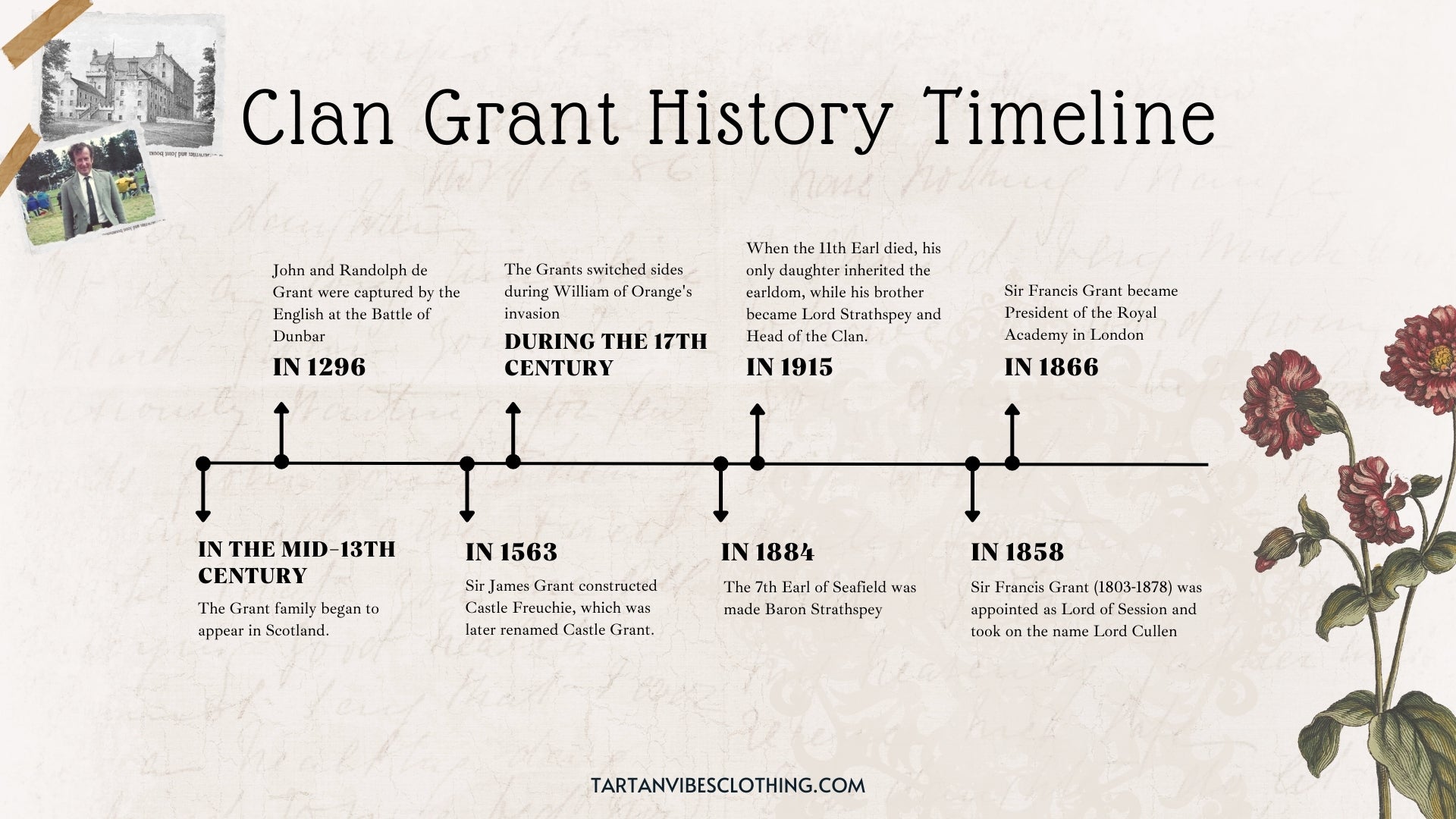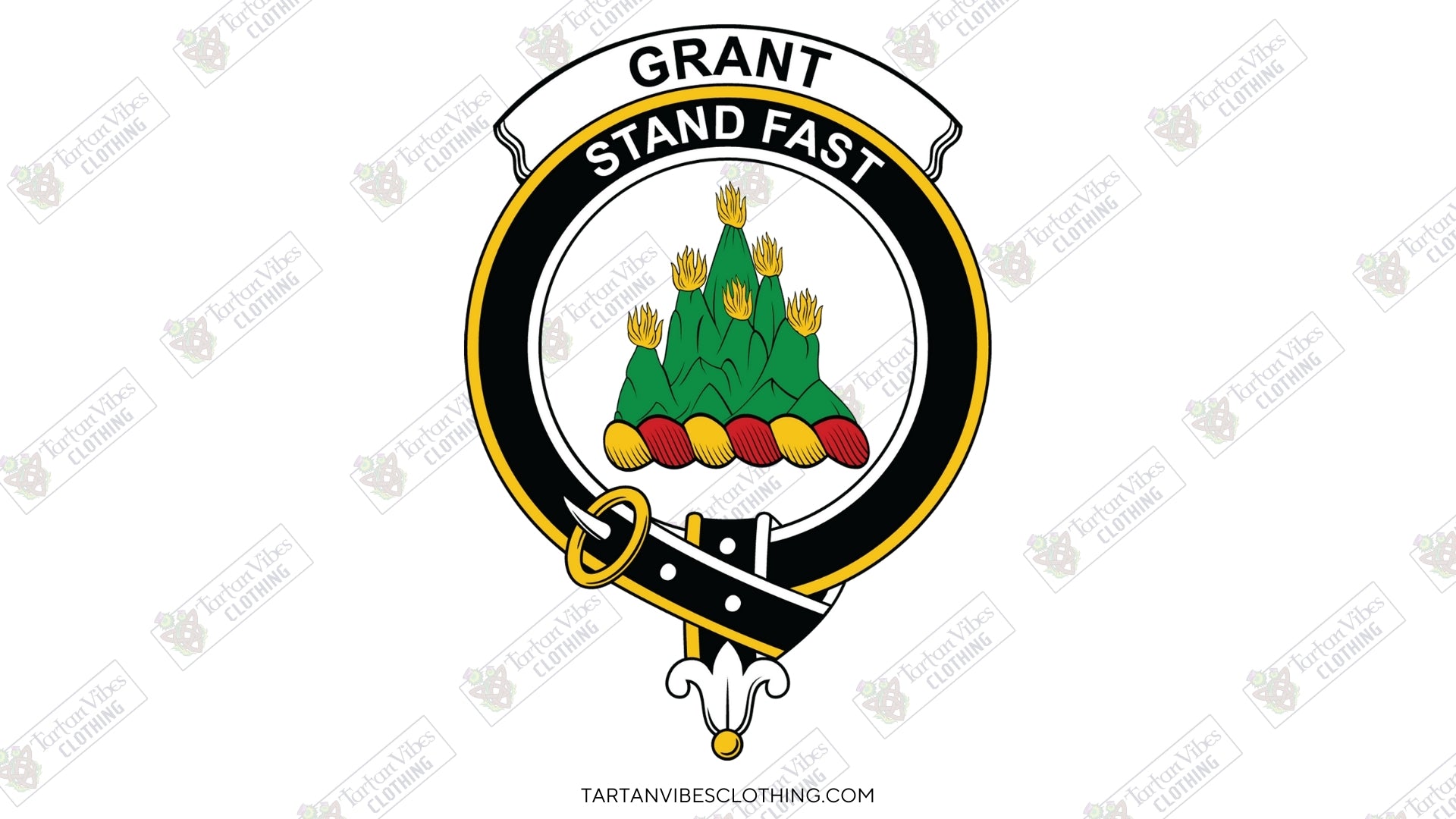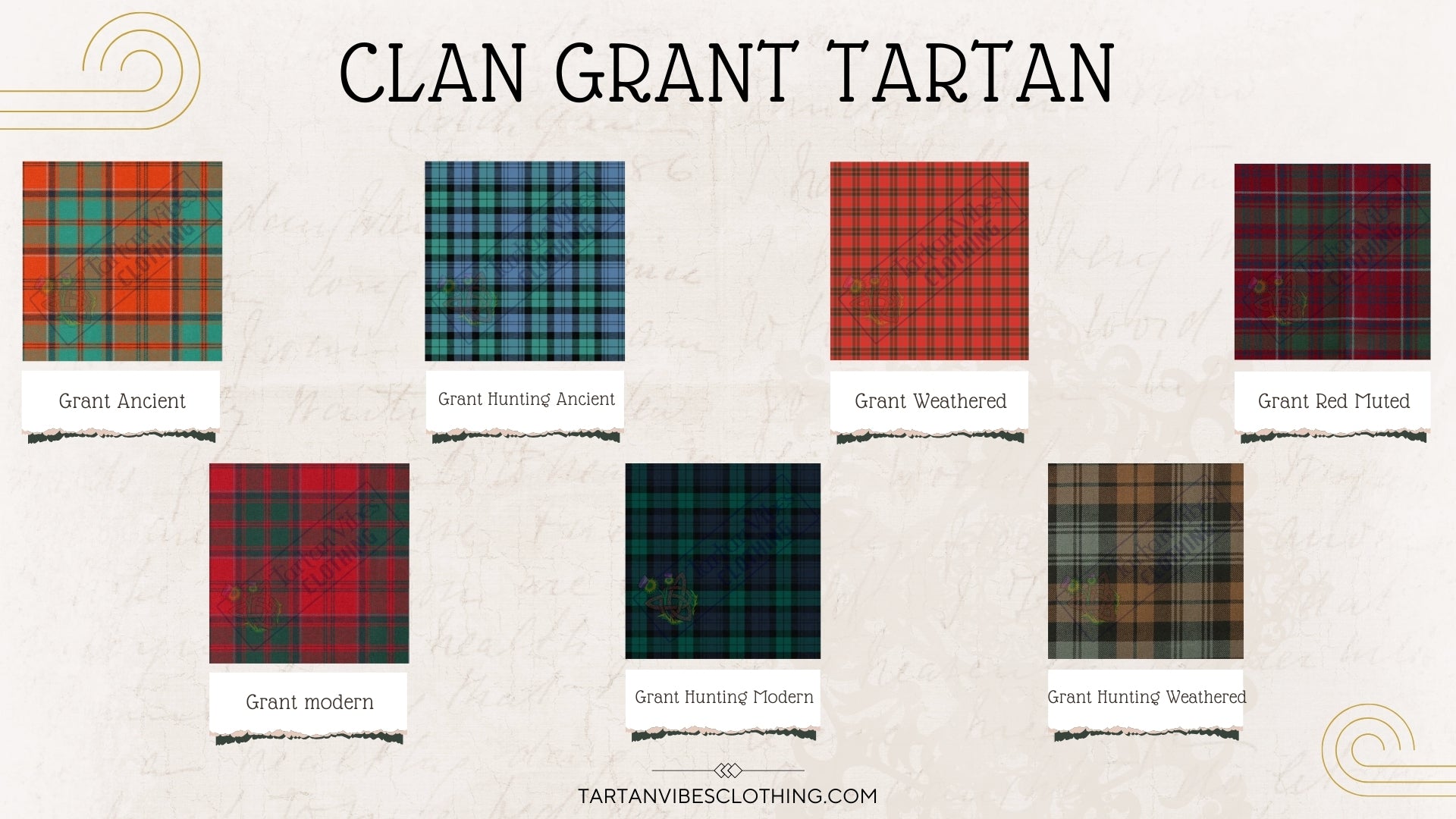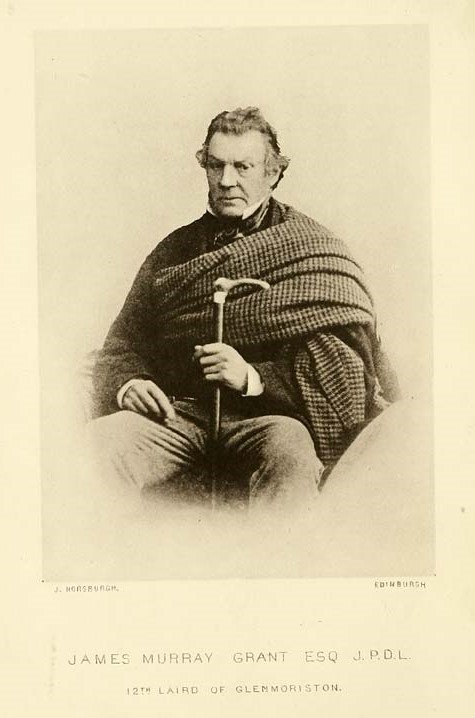Table of Content
I. Introduction
Nestled amid the picturesque Strathspey region, Clan Grant stands as a venerable symbol of Scottish heritage. With roots dating back through the corridors of time, this esteemed clan has woven a tapestry of resilience, honor, and tradition. From their ancestral stronghold at Castle Grant, the clan's legacy unfolds - A story intricately connected to the heart of Scotland.
In this article, we embark on a journey to unravel the essence of Clan Grant - its name echoing nobility and its history intertwined with the very fabric of Scottish culture.
A. A Brief Overview of Clan Grant

The Grant clan, hailing from the Highland Scottish clan, can trace their ancestry back to the 9th century under the rule of King Kenneth MacAlpine . They held significant power in the northeast region of Scotland and were staunch supporters of William Wallace.
Unlike many other Highland clans, the Grants were not greatly impacted by the forced evictions known as the Highland Clearances. Their leader, Sir James Grant , even established the town of Grantown-on-Spey to provide support for his fellow clan members and prevent them from having to leave their homeland. The clan's motto is "Stand fast" and their crest depicts a mountain engulfed in flames.
B.The original name of Clan Grant
The name Grant has been an influential one throughout Scotland’s history but the exact origins of the ancient Clan Grant remain a subject of discussion. The traditional oral histories of the Clan Grant suggest that its origins lay to the north with the Viking, Haakon Grandt of Norway, who settled in Scotland about 960, after a brief sojourn in Ireland.
Others believe the Grants descend from Kenneth MacAlpin, a 9th-century king of the Picts, who became King of Scots. This legend also established the Siol Alpin (descendants of Alpin), a familial bond between the Grants, the MacGregors, and other clans. Another theory is that the Grants came from the south with influential Anglo-Norman feudal barons in the 13th century to establish their foothold in the vicinity of Inverness.
II. Clan Grant History

The first appearance of the Grant clan in Scotland was during the mid-13th century. Sir Laurence de Grant, who is believed to have migrated from Nottinghamshire where his mother's family, the Bissets, owned land, served as Sheriff of Inverness in 1263. Around the same time, his brother Robert held lands in Nair nshire. It is also said that the Highland Grants were connected to Clan Gregor through Siol Alpin and can trace their ancestry back to King Kenneth MacAlpin. They were known for their loyalty to Robert the Bruce, with John and Randolph de Grant being captured by the English at the Battle of Dunbar in 1296.
As a reward for their allegiance, they were granted the lands of Glenmoriston and Glen Urquhart and became a prominent clan in the Spey valley. In 1563, Sir James Grant constructed Castle Freuchie, which was later renamed Castle Grant.
During the 17th century, the Grants supported the Marquis of Montrose and the Royal Cause in Scotland but changed sides during the invasion of William of Orange. They also backed the House of Hanover during the 1715 and 1745 Uprisings. Through the marriage of Sir Ludovic Grant, 7th Baronet and 20th Chief of the Name, to Lady Margaret Ogilvie, daughter of the Earl of Findlater, the earldom of Seafield was acquired by the 9th Baronet. In 1884, the 7th Earl of Seafield was made Baron Strathspey, and when the 11th Earl passed away in 1915, his only daughter inherited the earldom, while his brother became Lord Strathspey and Chief of the Clan.
In 1858, Sir Francis Grant (1803-1878) was appointed as Lord of Session and took on the name Lord Cullen. William Grant (1701-1664), the second son of Lord Cullen, also became a Lord of Session and adopted the name Lord Prestongrange. Sir Francis Grant, who was born in Edinburgh, was known for his paintings of sporting scenes and went on to become the President of the Royal Academy in London in 1866.
📜 Please also see the history at https://clangrant.org/
III. Clan Grant Crest & Coat of Arms
A. Clan Grant Crest
The combination of these symbols in the Grant Clan crest not only honors the historical roots of the clan but also conveys enduring values such as readiness, resilience, and a connection to the fertile landscapes of their ancestral lands. The crest serves as a proud emblem, representing the identity and spirit of Clan Grant’s History across generations.
Clan Grant
Gaelic Name: Grannd
Crest: A burning hill, Proper
Motto: Stand Fast
Origin of Name: French, grand (great)
Badge: Pine
Lands: Strathspey, Glen Urquhart, Glen Moriston, and Loch Ness
Clan Chief: The Rt. Hon. The Lord Strathspey

The belt and buckle clansman’s badge features a mountain in flames. In former times, large pyres or bonfires were ignited on high hills or mountains in Strathspey to signify a gathering of the men of the clan, to celebrate a joyous event, or to warn the clan of impending danger.
B. Clan Grant Coat of Arms
Coat of Arms is how families and knights could be identified through the use of symbols and signs, either on banners, shields or seals. By creating crests and coats of arms warriors could be identified on the battlefield when encased in armour and people could be seen as part of a family. Coat of Arms was usually reserved for Royalty or Nobleman.
The Grant Clan Coat of Arms is a shield of red with three antique gold crowns. In the upper left corner of the shield is the emblem signifying that our chief is a Baronet of Nova Scotia. Over the shield is a baron’s crown, a helmet with mantling, and a burning mountain with the motto “Craigelachie.” Two naked savages with clubs support the shield. The clan motto “Stand Fast” is underneath.
IV. Clan Grant Tartan
Each clan has numerous versions of its tartan which can make it very confusing for those not accustomed to how it works.
Normally it starts with two main categories, Dress which is mostly reds based, and Hunting which is mostly green and browns for camouflage. Most clans also have an Ancient and a Modern version of both.

The Clan Grant tartan is a traditional Scottish tartan associated with the Clan Grant, a Highland Scottish clan. The tartan typically features a pattern of green, blue, and black stripes, with red and white accents. The specific design may vary, as there are different variations of the Grant tartan.
One of the well-known versions is the Grant modern tartan, which consists of dark green, navy blue, and black stripes intersected with red and white lines. It's essential to note that there are other Grant tartan variations, such as the Hunting Tartans are designed to blend in with nature and act as camouflage. Some clans do not have these types of tartans because their traditional tartans already consist mostly of green or brown, making them suitable for blending in with the environment.
On the other hand, tartans like the Clan Fraser, which are predominantly red, would not provide much concealment for hunters in the wild. In addition, the ancient and dress versions, each with its own color palette.
Explore the timeless traditions of Cameron Clan through our collection of tartan products on our website. And bring a piece of the clan's history into your present.
V. Prominent Members of Clan Grant
A. Overview of Key Chiefs and Leaders in Clan Grant
The Clan Grant has a rich history with various chiefs who have played pivotal roles in the clan's development.
- John Grant, 1st of Freuchie (d. 1585): John Grant is considered the founder of the Freuchie branch of Clan Grant. He acquired the lands of Freuchie in 1547 and was the first Laird of Freuchie.
- John Grant, 6th of Glenmoriston (1662-1747): Known as the "Black Colonel," John Grant of Glenmoriston was a loyal supporter of the Jacobite cause during the early 18th century. He led the Clan Grant at the Battle of Sheriffmuir in 1715.
- Sir James Patrick Trevor Grant, Clan chief of Clan Grant (1720-1806): Referred to as the "Good Sir James," he was a benevolent and respected landlord. He played a crucial role in the development of Grantown-on-Spey and contributed to the prosperity of the region.
- Sir James Hope Grant (1808-1875): A distinguished military leader, Sir James Hope Grant played crucial roles in the Indian Rebellion of 1857 and the Second Opium War in China. His military achievements and leadership have contributed to Clan Grant's legacy.
B. Contributions and Impact of Prominent Leaders
1. John Grant, 1st of Freuchie (d. 1585)

John Grant, 1st of Freuchie, made significant contributions to the Clan Grant during the 16th century, leaving an enduring impact on its history. As the founder of the Freuchie branch, he played a pivotal role in shaping the clan's destiny. Acquiring the lands of Freuchie in 1547, he established a lineage that would become integral to the broader clan Grant.
His leadership and strategic decisions contributed to the growth and stability of the Freuchie branch, setting the stage for future generations. John Grant's influence reverberates through the clan's historical narrative, marking him as a foundational figure whose legacy endures within the proud traditions of Clan Grant.
2. John Grant, 6th of Glenmoriston (1662-1747)
John Grant, 6th of Glenmoriston, played a crucial role in the history of Clan Grant during the tumultuous 18th century. Notably known as the "Black Colonel," he was a devoted supporter of the Jacobite cause. His unwavering commitment was showcased at the Battle of Sheriffmuir in 1715, where he led the Clan Grant.
While the Jacobite uprising faced challenges, John Grant's military leadership left a lasting impact on the clan's legacy. His contributions during this pivotal period underscore the clan's involvement in significant historical events and reflect the resilience and loyalty that Clan Grant members held during times of political unrest.
3. Sir James Patrick Trevor Grant, 33rd hereditary (Clan chief of Clan Grant)
In the late 18th century, Sir James Grant of Grant, Baronet, was probably the ablest Chief of his long line. He was so admired by his clansmen they called him ‘The Good Sir James’. During times of hardship and famine, when many highland chiefs were clearing clansmen from their lands, Sir James imported food and grain at his own expense for his starving tenants.
He did his best to create jobs so his clansmen would not have to relocate to the lowlands or emigrate to the new world. Sir James was perhaps best known for the planning and development of Grantown-on-Spey in 1765.
4. Sir James Hope Grant (1808-1875)

Sir James Hope Grant (1808-1875) was a distinguished military leader whose contributions left a lasting impact on both Clan Grant and British military history. Serving during significant conflicts, including the Indian Rebellion of 1857 and the Second Opium War in China, Sir James demonstrated strategic brilliance and leadership prowess. Rising through the ranks, he became a key figure in the British military establishment.
VI. Conclusion
In conclusion, Clan Grant becomes evident that this esteemed Scottish clan is not merely a historical entity but a living testament to the enduring spirit of its members. With a legacy marked by loyalty and contributions to significant events, Clan Grant stands as a proud emblem of Scottish identity, inviting all who connect with its story to share in the enduring pride of a remarkable heritage.
Frequently Asked Questions
1. What are the colors of the Grant clan?
The Clan Grant tartan is a traditional Scottish plaid pattern in bright red and forest green with royal blue and sky blue accents.
2. What does grant mean in Gaelic?
From Scottish Gaelic Grannd, from Anglo-Norman graunt (“big, large”), from Old French grant, from Latin grandis. Doublet of grand.
3. Who was James Grant of Clan Grant?
Sir James Grant of Grant, 8th Baronet, FRSE, FSA Scot (19 May 1738, Moray – 18 February 1811, Castle Grant) was a Scottish landowner, politician and Chief of Clan Grant. He was often referred to as the Good Sir James.
4. Where did the Grant family come from?
Grant Clan History: The Grants first emerge in Scotland in the mid-13th century.
5. Was Clan Grant powerful?
By the 16th century, the clan and its chief had become powerful enough to play a part in national politics. Their main allies were the Clan Gordon, whose chief was the powerful Earl of Huntly. In 1535 James Grant, 3rd Laird of Freuchie was made responsible for the policing of Strathspey.






